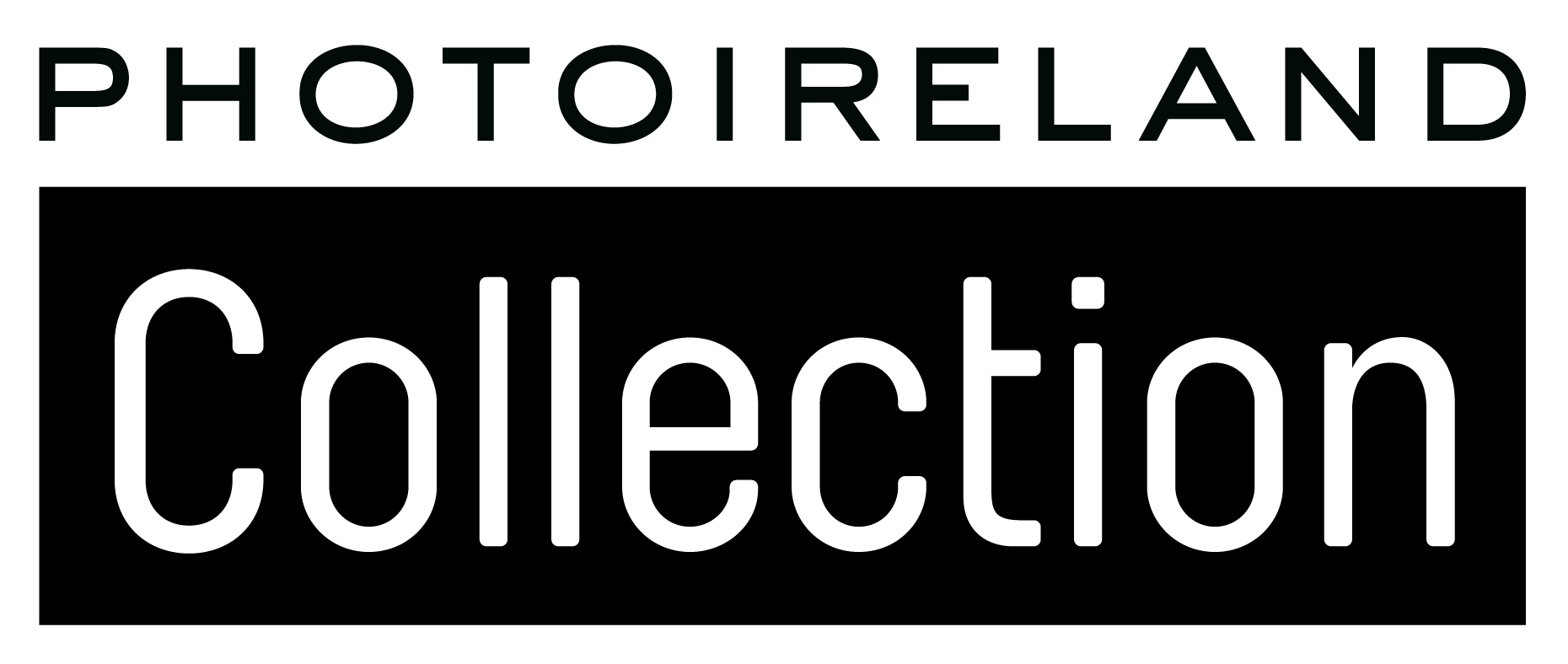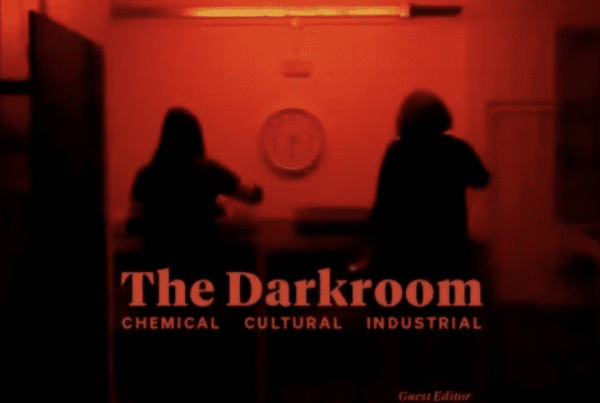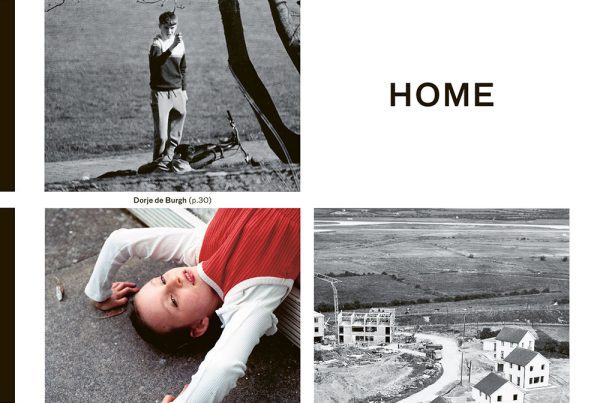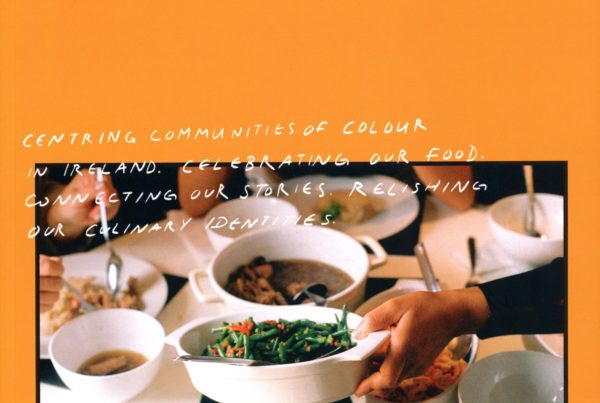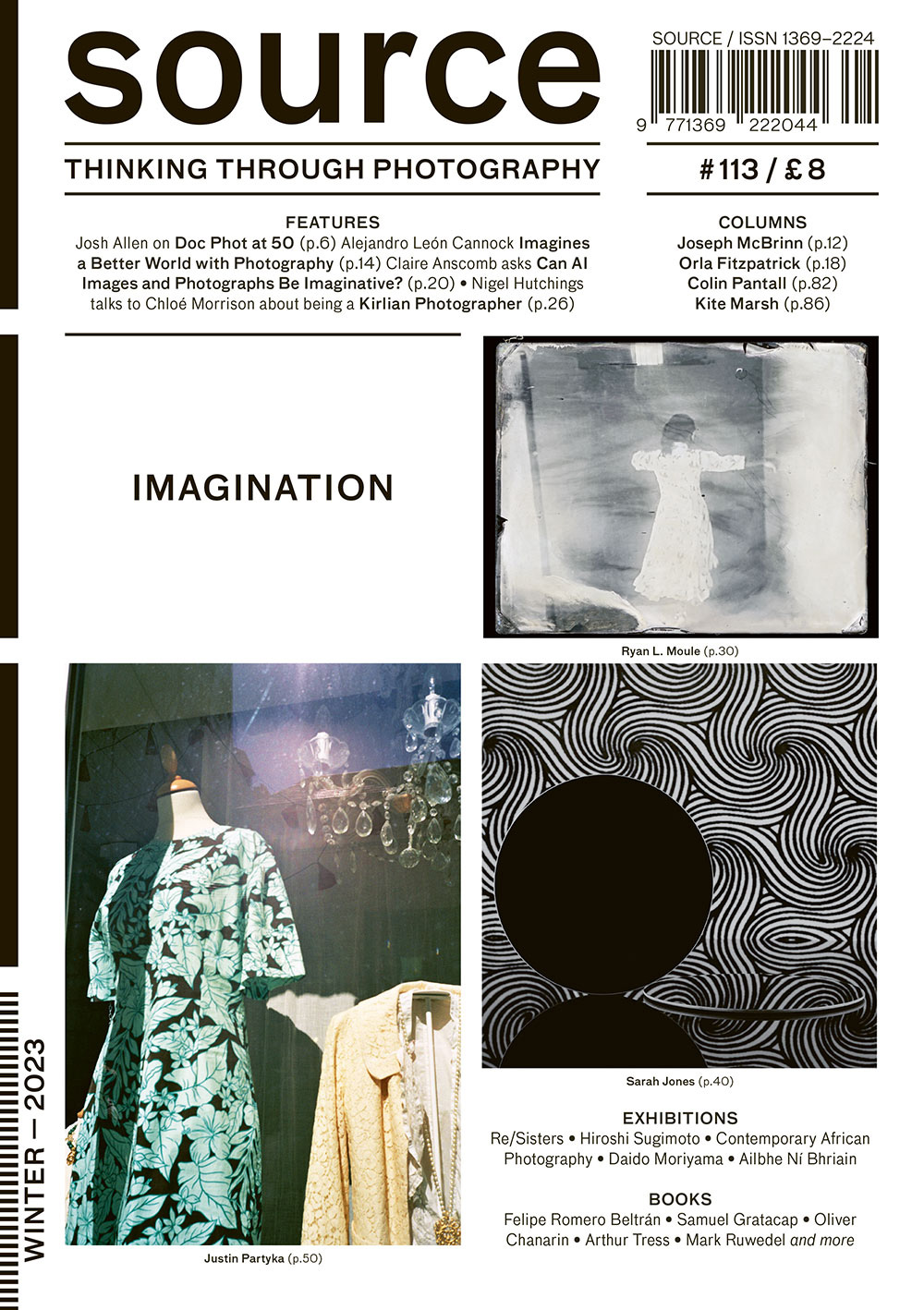
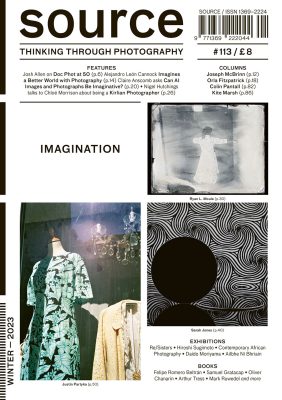 Source
Source
Winter 2023: Issue 113
Self-Published
English
Edited by John Duncan and Richard West.
Softcover
86 pages
310 x 220 mm
2023
ISSN 13692224
This issue of Source, entitled Imagination is a look at the imaginative potential of photography, including essays on the relevance of AI-generate images, computer algorithms, the ambro-type and kirlian photography.
Artists and writers featured in this issue include Josh Allen (UK, M), Claire Anscomb (UK, F), Alejandro León Cannock (PE, M), Chris Clarke (CA, M), Simon Denison (UK, M), John Duncan (NI, M), Neva Elliott (IE, F), Orla Fitzpatrick (IE, F), Susanna Galbraith (NI, F), Jennifer Good (UK, F), Emma Jones (UK, F), Sarah Jones (UK, F), Nora Labo (F), Joseph McBrinn (IE, M), Chris Milton (UK, M), Chloé Morrison (F), Ryan L. Moule (UK, M), Colin Pantall (UK, M), Justin Partyka (UK, M), Annette Richardson (UK, F), Kimberly Schreiber (US, F), Ian Walker (UK, M), Edward Welch (UK, M), Richard West (NI, M), Yasufumi Nakamori (JP, M), Harry Callahan (US, M), Nigel Hutchings (UK, M), Hiroshi Sugimoto (JP, M), Daidō Moriyama (UK, M), Ailbhe Ní Bhriain (IE, F), Felipe Romero Beltrán (Co, M), Samuel Gratacap (FR, M), Oliver Frank Chanarin (UK, M), James A. Ganz (US, F), Mark Ruwedel (US, M), Gareth McConnell (NI, M), Matt Courtney (US, M), Morganna Magee (AU, F), James Berrington (UK, M) and Ciarán Dunbar (NI, M).
Editorial
If you cannot imagine a different world you cannot begin to make it. This is one of the basic principles behind Alejandro León Cannock’s essay about the role photography has in making a better world. It reads as a manifesto for a new model of photography made by photographers who work collaboratively.
Photography has often been considered unimaginative, a tool that merely captures the world as it is. Claire Anscomb shows the many choices that photographers make, and says that although the medium may have constraints, it is working within these that gives play to the imagination. These arguments about photography and the imagination are being given new relevance as they are applied in similar ways to AI-generated images.
The starting point for Ryan Moule’s The Cloud and its Shadow was the use of an algorithm to search for videos uploaded to the internet with no views, no metadata or title. This unseen media disrupts the rationale of a search industry that encourages being seen, ‘liked’ or shared. It has provided a useful stream of raw material for Moule to work with and continues his interest in drawing attention to the act of looking and perceiving. The final images are made using one of the oldest photographic processes, introduced in the 1850s, the ambrotype. Moule makes use of the process to merge the material and poetic qualities of his images. Susanna Galbraith introduces the work and notes how “Moule’s plates become acts of unearthing. They disrupt the blind spots of online, flicking matches into a shadow we didn’t realise was there”.
Sarah Jones’ new work “considers the medium of photography as just that: a medium, a receptor, a conductor, a transmitter”. Subjects are drawn from everyday life: cultivated plants in public parks, collected objects set up in her studio and recorded using the screen of her large format analogue view camera. The screen reoccurs in her small studio works, as both a void to fall into and a surface to project on to. In this labyrinth of images a plant bends towards the bright light of day in a captured moment of phototropism. The diptych Mimosa (Actor) (I) and (II) echoes to the behaviour of the mimosa tree that mimics a response to touch, its leaves curling and opening back out again.
Working in the Nouvelle-Aquitaine region Justin Partyka has used the structure of France’s Transport Express Régional network to explore the area: the routes completed so far include from Poitiers to Angouleme and Poitiers to Port-de-Piles. Where the train stops he explores the vernacular culture of these villages, towns and cities on foot. For Partyka it often “feels like a way of life is coming to an end, that the last remnants of ‘old France’ are on the verge of being swept away by the great wave of contemporary industrial globalisation”. Partyka is also concerned when making these photographs in “trying to solve very personal challenges of artistic expression and aesthetics: Perhaps this process is somehow about a form of (visual) poetics, but I am not sure how best to articulate it: maybe it can only be articulated most clearly in the photographs”. There is also a niggling thought in the back of his mind that “‘the time is gradually coming into focus when film – and ultimately photography as I consider it – will cease to exist”.
— The Editors
(source: https://www.source.ie/archive/issue111/is111editorial.php)
Source is a quarterly photography magazine, available in print and as a digital edition, published in Belfast, Northern Ireland. They publish emerging photographic work and engage with the latest in contemporary photography through news, thoughtful features and reviews of the latest exhibitions and books from Ireland and the UK. Their website brings together an archive of writing and pictures from the magazine alongside current features.
source.ie
(source: https://www.source.ie/main/about.php)
